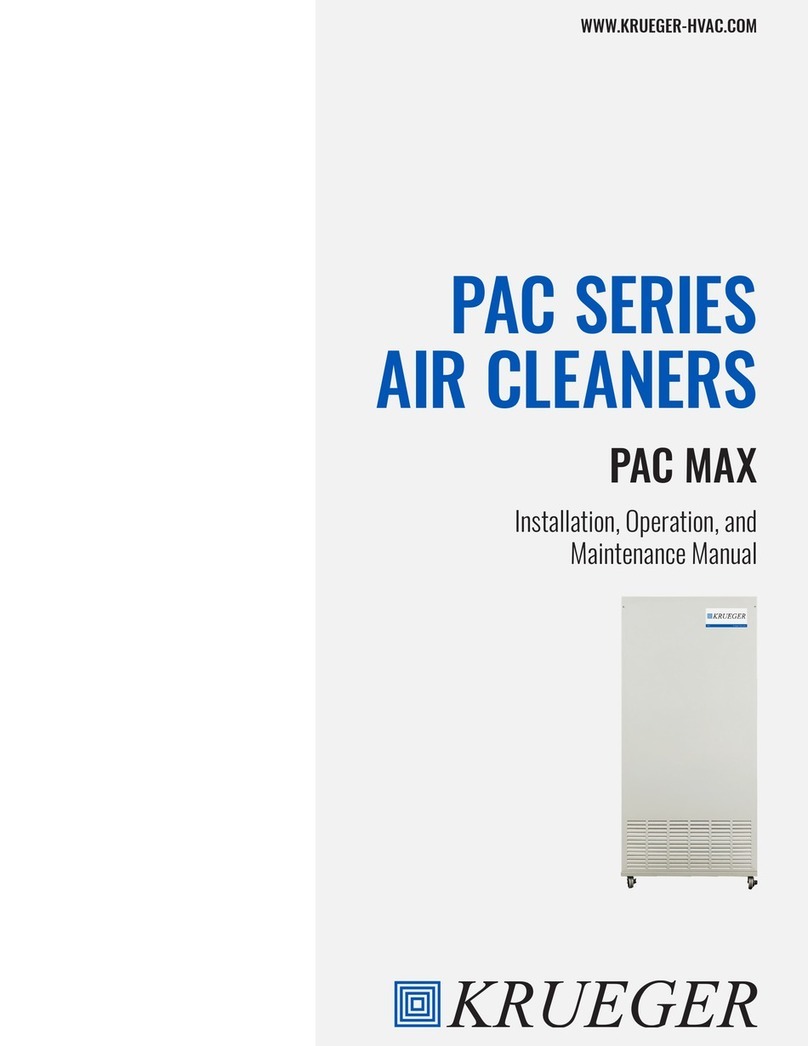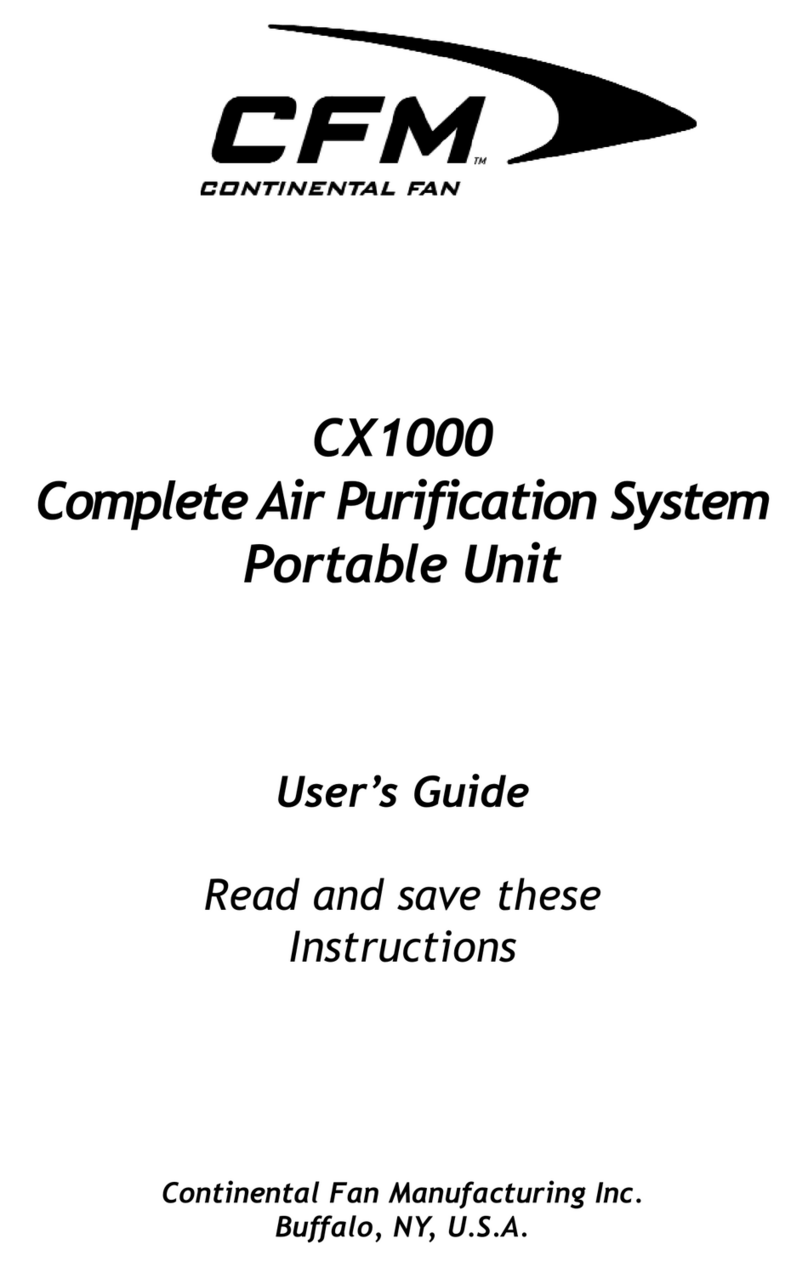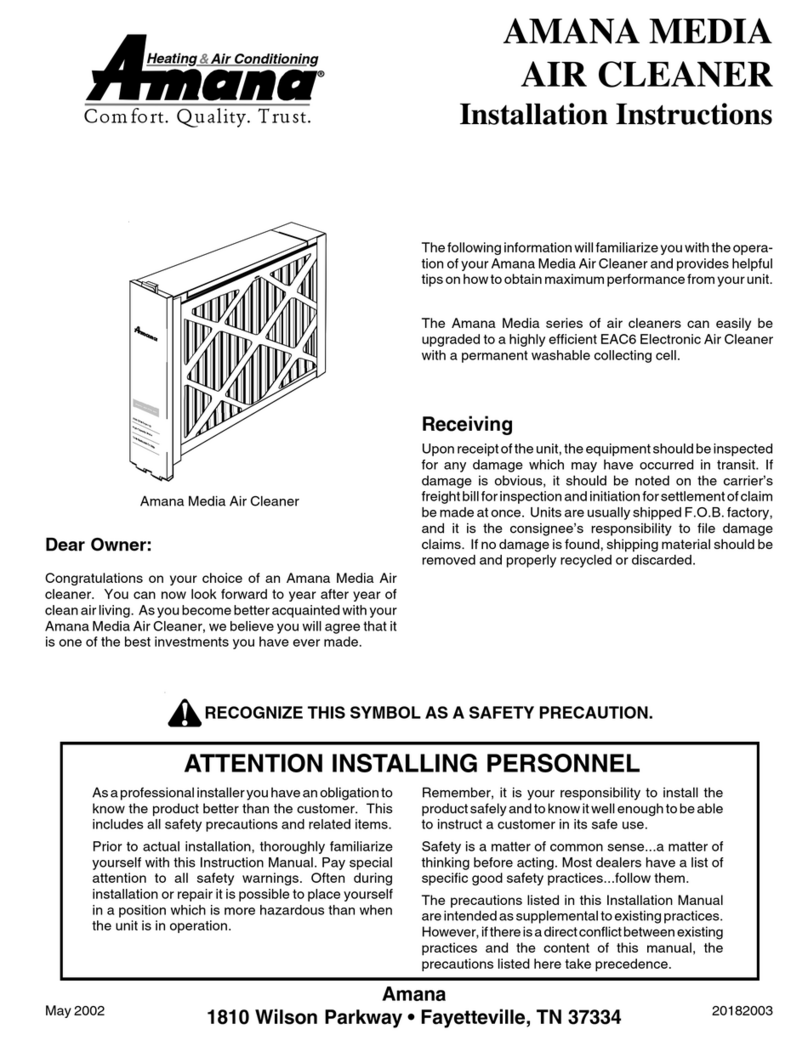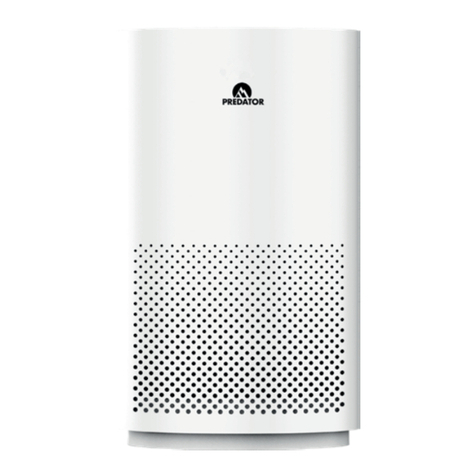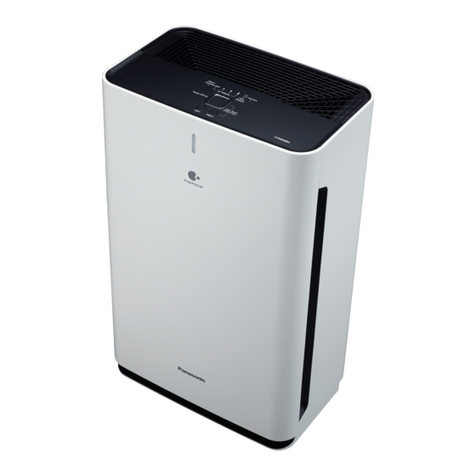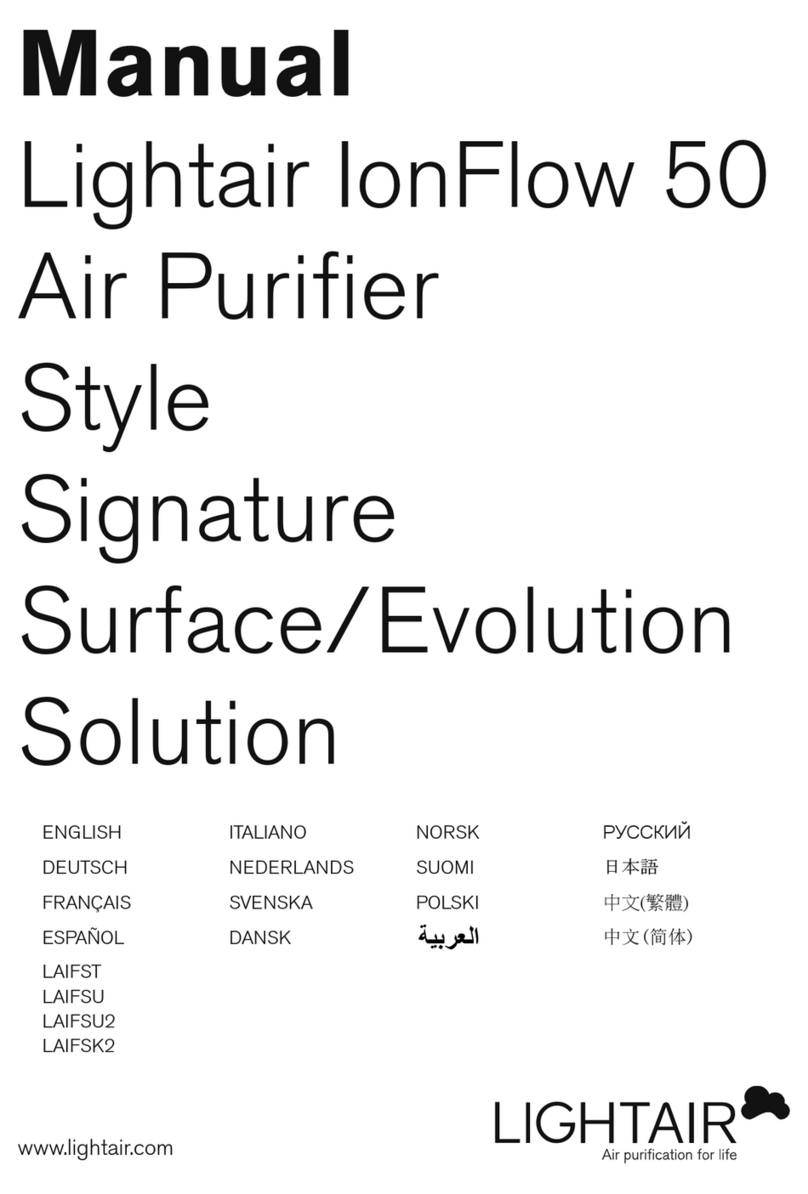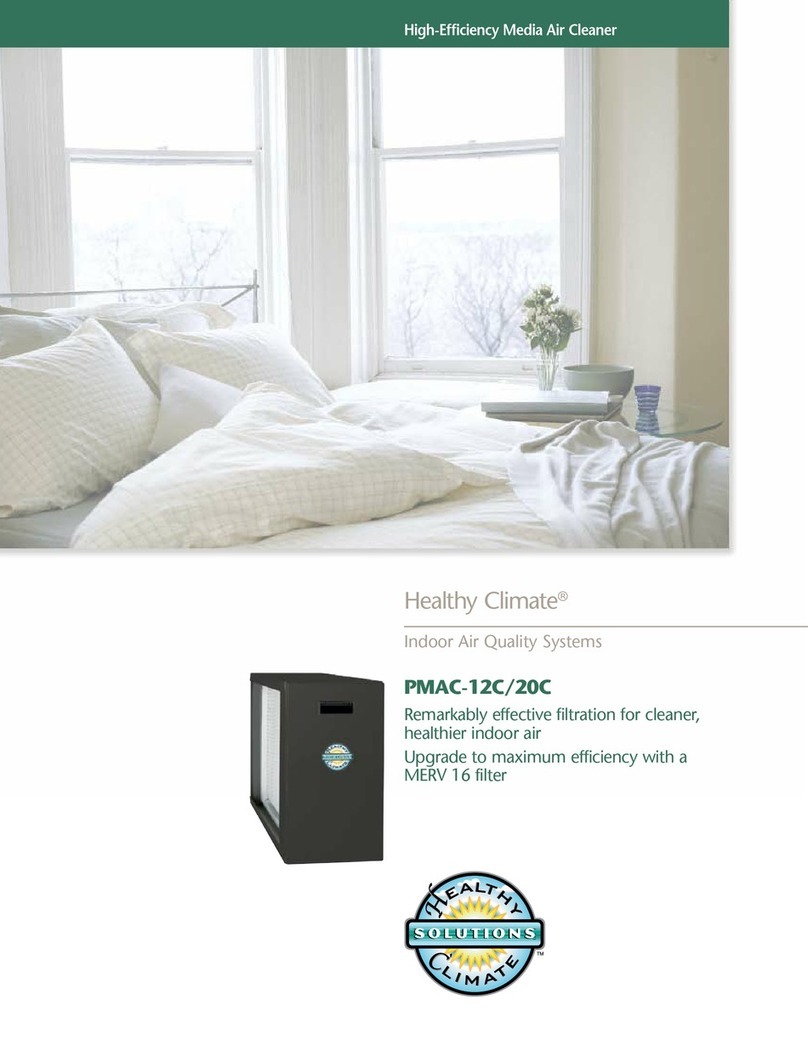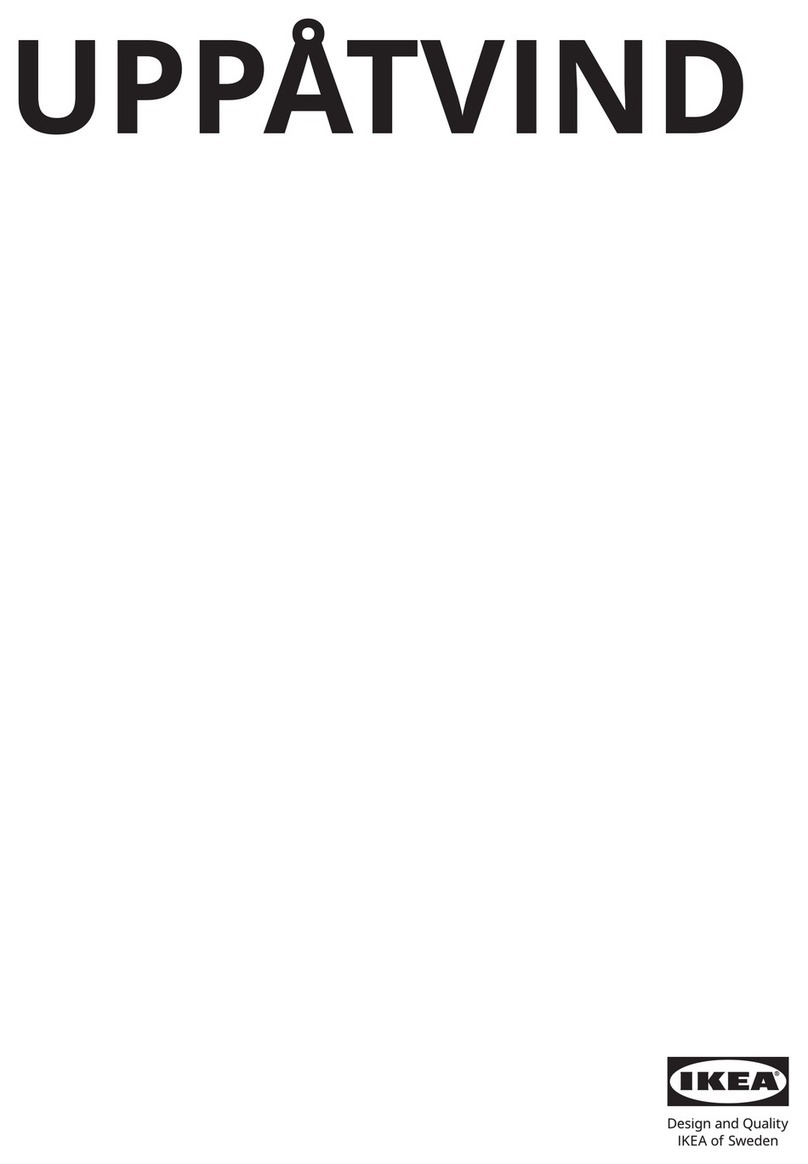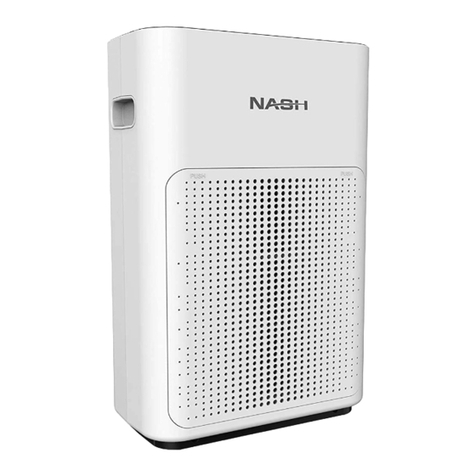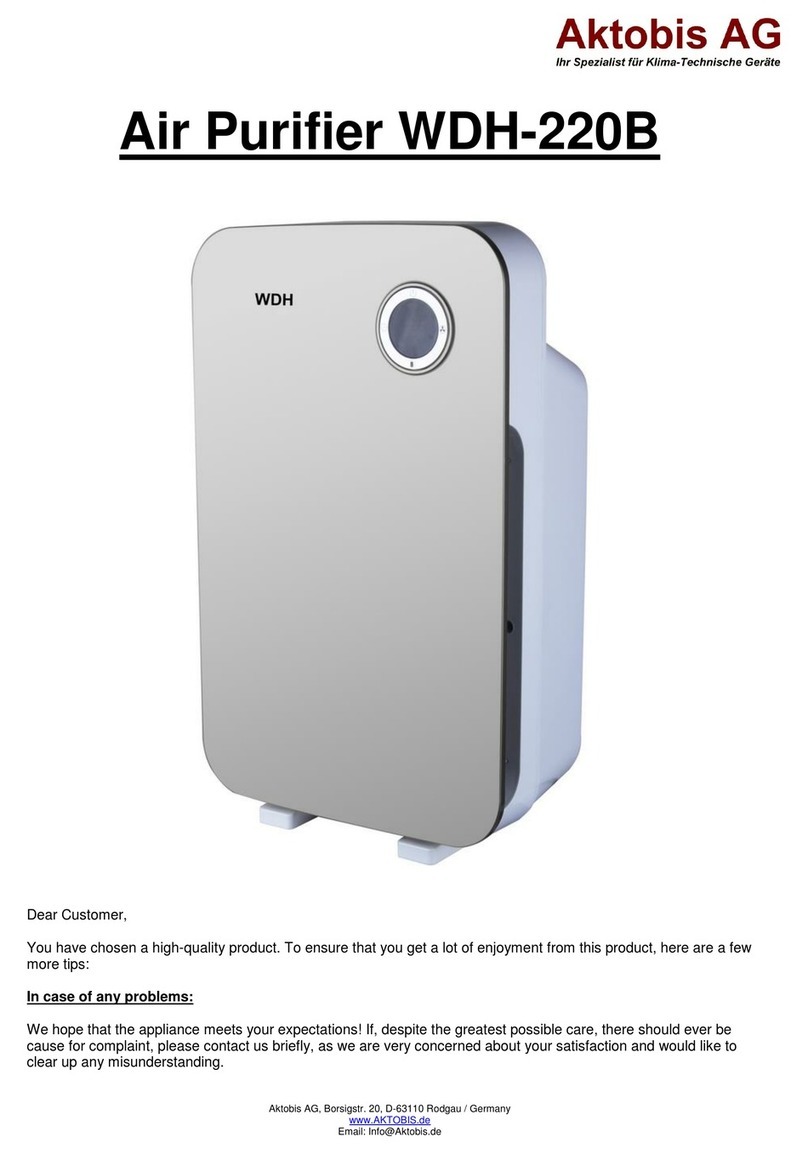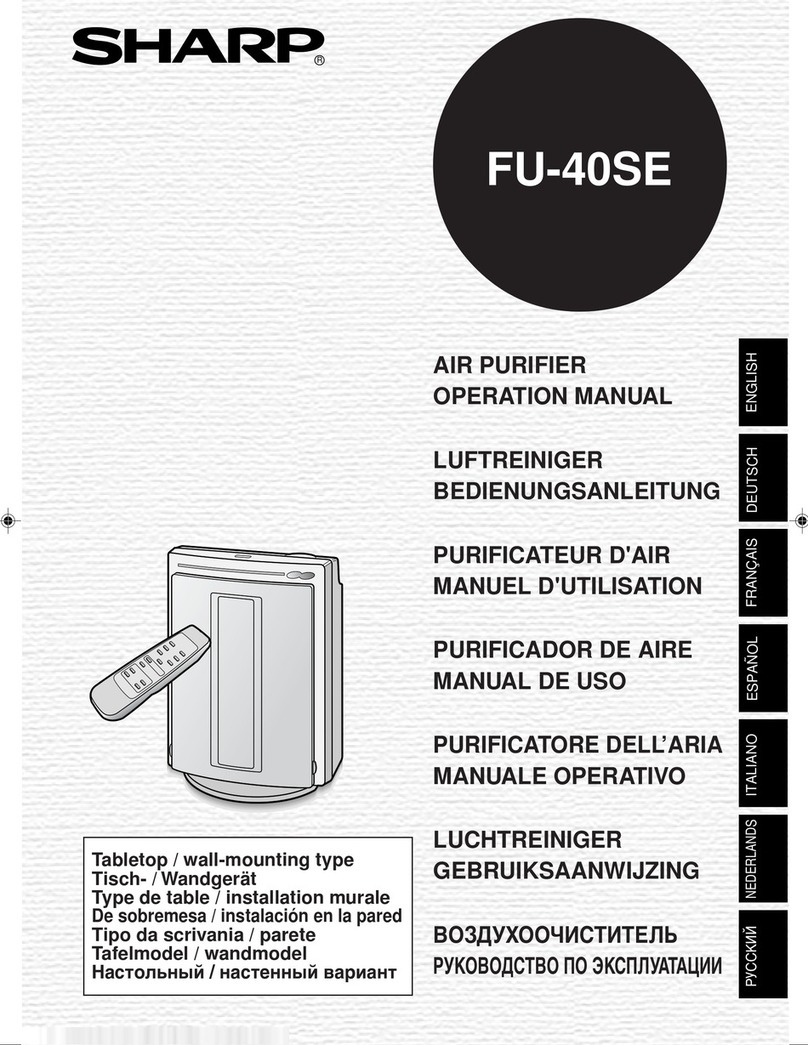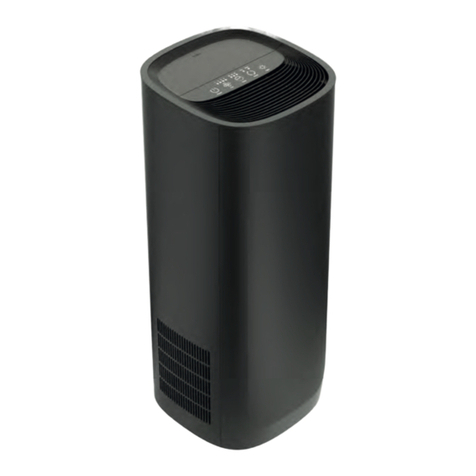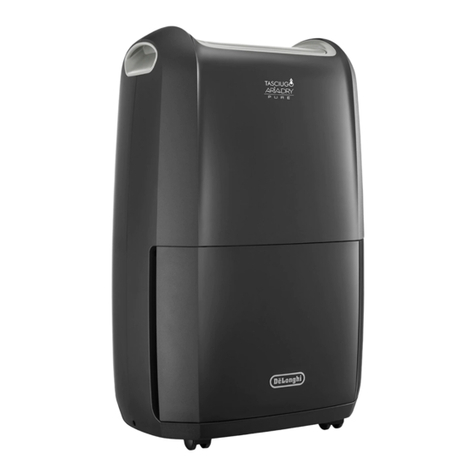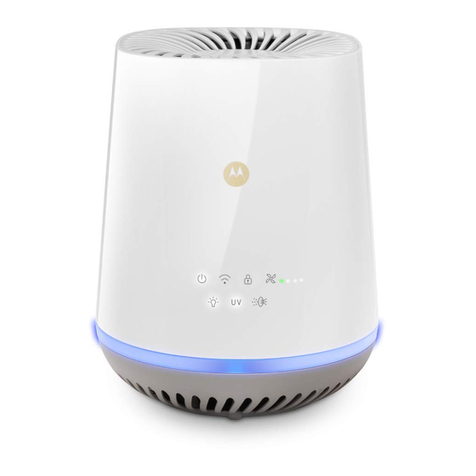KRUEGER PAC Series User manual

PAC HF/LF AIR CLEANER
INSTALLATION, OPERATION, AND MAINTENANCE MANUAL
SECTION ONE - INTRODUCTION................................. 3
Features............................................................................3
Options .............................................................................3
Applications.....................................................................3
SECTION TWO - INSTALLATION.................................. 4
Safety Warning & Procedures....................................4
Unpacking Instructions.................................................4
Assembly..........................................................................4
SECTION THREE - OPERATION ................................... 4
Initial Start-up.................................................................4
Speed Adjustment..........................................................4
Airflow Indicator.............................................................4
Recirculation Mode........................................................4
Partial Exhaust / Recirculation Mode........................5
Total Exhaust Mode (Negative Pressure) .................6
Achieving Negative Pressure ......................................6
Difficulty Achieving Negative Pressure....................6
SECTION FOUR - MAINTENANCE & SERVICE .......... 7
Parts Identification........................................................7
Cleaning the Unit............................................................7
Prefilter Replacement...................................................8
Removal of Front and Rear Panels.............................8
HEPA Filter Replacement .............................................8
Removal of the UV Light Assembly...........................8
Power Cord......................................................................9
ON/OFF Switch ...............................................................9
Speed Control Switch....................................................9
Air Pressure Switch.......................................................9
Capacitor..........................................................................9
Motor ................................................................................9
Motor/Blower Lubrication............................................9
Relocating a Contaminated Unit.................................9
Unit Decontamination ...................................................9
UV Light Tube Replacement ........................................10
SECTION FIVE - TROUBLESHOOTING ........................ 11
Inoperative Airflow ........................................................11
Low Airflow......................................................................11
High Airflow ....................................................................11
Excessive Contamination .............................................11
SECTION SIX - MISCELLANEOUS ............................... 12
Wiring Diagram ..............................................................12
Specifications .................................................................12
Replacement Parts .......................................................13
Airflow Measurement & Testing.................................14
SECTION SEVEN - APPENDIX...................................... 14
SECTION EIGHT - LIMITED WARRANTY ................... 15
TABLE OF CONTENTS

3
PAC HF/LF AIR CLEANER
INSTALLATION, OPERATION, AND MAINTENANCE MANUAL
FEATURES
• Low Cost Isolation Room: The PAC HF/LF with UV is an
easy and economical solution for creating a negative
pressure, isolation room. Simply roll the PAC HF/LF with
UV into a standard room, connect flexible ducting to
the 6” (152 mm) collar on the top of the unit for partial
exhaust or to the optional 8” (204 mm) flanged collar for
total exhaust and vent the purified air to the exterior
through a window or wall.
• Flexible Applications: The versatile PAC HF/LF with UV
can be used as a clean air recirculating unit, a negative
pressure unit or as a split system to create both negative
pressure and clean air recirculation by simultaneously
exhausting some of the air out while recirculating the
remainder back into the room.
• Small and Portable: The PAC HF/LF with UV can be rolled
from one room to another and easily fits into areas with
limited floor space.
• Simple Maintenance: Both HEPA filter and prefilter
are easily accessible for replacement by authorized
personnel.
• 3-Speed Adjustable Airflow: With speeds ranging from
560 to 800 CFM (951 to 1360 m3/hr), the PAC HF/LF with
UV provides effective air filtration for a wide variety of
room sizes.
• Room Air Changes Per Hour: Provides up to 27 room
air changes per hour (ACH) in a typical 18 x 12 x 8 ft (5.5 x
3.7 x 2.4 m) patient room or up to 12 ACH for rooms up to
4,000 cubic feet (113 cubic meters).
• Low-High Clean Air Circulation Pattern: Room air, along
with airborne contaminants, is drawn into the intake
grille at the bottom while the purified air is discharged at
a high velocity from the exhaust grille located at the top
of the PAC HF/LF with UV to generate a sweeping, low-
to-high air circulation pattern with adequate “reach” to
optimize the clean breathing zone for patient and staff.
• Quiet Operation: 52 dBA on low, 56 dBA on medium,
and 60 dBA on high speed measured 30” (762mm) from
face of the unit.
SECTION ONE - INTRODUCTION
OPTIONS
• PAC HF/LF with ULPA filter upgrade
• 220 V, 50/60 Hz unit available
• Carbon prefilter
• 8” (203 mm) 100% exhaust collar kit
APPLICATIONS
• Negative Pressure Rooms
• Emergency Rooms
• Waiting Rooms
• Sputum Induction
• Aerosol Pentamidine Treatment
• Intensive Care Units
• Bronchoscopy Rooms
• Renal Dialysis Rooms
• Clinics
• Physician Offices
• Correctional Facilities
• Nursing Homes
• Homeless Shelters
• Addiction Recovery Center
Krueger’s PAC HF/LF UV is a portable, self-contained high efficiency particulate air (HEPA) filtration system with an ultraviolet
lamp that helps to disinfect the filter face. The PAC HF/LF with UV is designed to easily and economically create a negative
pressure isolation room that will meet OSHA and CDC TB guidelines. The PAC HF/LF with UV can be used as a positive
pressure clean air recirculating system in clinics, waiting rooms, hospital emergency rooms and other confined areas or as a
partial or complete exhausting system to create a negative pressure isolation room for possible use with patients known or
suspected of having TB, SARS, or other infectious diseases. As a recirculating unit, the PAC HF/LF with UV powerful motor/
blower can deliver up to 800 cubic feet per minute (CFM) or 1360 m3/hr to provide a large number of room air changes per
hour to minimize the spread of airborne diseases to patients and health care workers. As a negative pressure unit, the air
passing through the HEPA filter is cleansed of 99.99% of particles as small as 0.3 micron and may be exhausted directly to
the exterior through a window, or through a wall, simply by connecting flexible ducting to the 6” (152 mm) collar located on
the top of the PAC HF/LF with UV. The PAC HF/LF with UV filter contains 220 square feet (20.4 square meters) of media to
extend its usable lifetime before filter loading occurs, resulting in decreased cost and fewer filter changes.

4
PAC HF/LF AIR CLEANER
INSTALLATION, OPERATION, AND MAINTENANCE MANUAL
SECTION TWO - INSTALLATION
INITIAL START-UP
1. Connect the power cord to a standard 115 V, 1-phase,
60 Hz, or 220 V, 50 Hz, grounded power source. Assure
that the circuit is sized to provide sufficient amperage as
noted on the data plate.
2. Locate the “ON/OFF” switch on the right side of the unit.
The switch is a maintain contact rocker type.
3. Turn the PAC HF/LF unit on by pressing downward on
the raised portion of the rocker switch. A light whirring
sound will be heard as the motor starts. Within 5 to 10
seconds, the module will start to provide clean air into
the environment.
SPEED ADJUSTMENT
NOTE: The PAC HF/LF unit is set on low at the factory.
1. To change speeds, remove the exhaust grille by pulling
down and lifting out.
2. Turn the 3-speed switch to the desired setting.
3. Replace the exhaust grille.
AIRFLOW INDICATOR
1. Locate the airflow indicator on the right side of the unit
above the “ON/OFF” switch. On high speed, the light will
turn on when there is insufficient pressure, indicating
the need for a filter change. The airflow indicator should
not be used as the only guide for when a filter change
is necessary. The unit should be checked at each use
to insure recommended room air changes per hour are
being met.
2. The air velocity generated by the unit may be checked
using an airflow measurement device. The volume of air
entering the lower intake grille should be approximately
560 CFM (951 m3/h) on low, 690 CFM (1172 m3/h) on
medium and 800 CFM (1359 m3/h) on high with a new
filter.
RECIRCULATION MODE
1. The PAC HF/LF unit is set at the factory on the 100% air
recirculation mode.
2. The room air change rate of the unit will depend on both
the speed setting and the size of the room. See table in
the Appendix on page 14 for representative room air
changes per hour (ACH).
3. For maximum recirculation efficiency, the unit should be
placed between the entry door and the patient’s bed or
the activity area (see Figure 1 on next page). However,
the unit will function effectively at other locations within
the room.
SAFETY WARNING & PROCEDURES
WARNING: To reduce the risk of fire, electrical
shock, or injury to persons, observe the following.
1. Installation work and electrical wiring must be done by
a qualified person(s) in accordance with all applicable
codes and standards, including fire-rated construction.
2. When cutting or drilling into a wall or ceiling, do not
damage electrical wiring or other hidden utilities.
3. Service to and decontamination of this equipment should
be performed by an authorized technician trained and
experienced in performance evaluation and maintenance
of clean air equipment. However, certain procedures are
outlined in this manual that can be performed by the
owner.
4. Before servicing the unit, switch power off at service
panel and lock service panel to prevent power from being
switched on accidentally, and follow proper procedures
as necessary.
5. Use this unit only in the manner intended by the
manufacturer.
UNPACKING INSTRUCTIONS
1. The PAC HF/LF is shipped in an open-framed crate. The
module should be inspected for exterior shipping damage
immediately upon arrival. If any damage is observed, a
claims report should be completed and promptly filed
with the responsible carrier.
2. Uncrate and remove all packing material. Examine the
unit for internal damage. If damage is discovered inside
the crating, file a claim with the responsible carrier
immediately. The shipping components list and actual
material received should be compared and any shortages
reported to Krueger immediately.
ASSEMBLY
1. The PAC HF/LF is shipped completely assembled from the
factory and requires no assembly. Every unit is tested
prior to shipment to verify airflow, noise level, and that
the unit is leak-free.
2. Place the unit in its final operating position (see Figure 1
for recommended positioning).
3. Lock the wheel locks on the casters to keep the unit from
accidental repositioning.
NOTE: The CDC requires that quantitative leakage and filter
performance tests be performed at the initial installation
and every time the filter is changed or moved. Tests should
be repeated every six months. The factory tests should not
be substituted for the initial test.
!
Warning
SECTION THREE - OPERATION

5
PAC HF/LF AIR CLEANER
INSTALLATION, OPERATION, AND MAINTENANCE MANUAL
Figure 1: Recommended unit positioning within a patient room
PARTIAL EXHAUST/RECIRCULATION MODE
Note: The PAC HF/LF with or without UV units come with a removable exhaust cover plate and a removable 6” (152mm) duct
collar for attachment to exhaust ducting (not included) to create a negative pressure room. If the exhaust cover plate is not
removed, both the PAC HF/LF with or without UV units will operate in the 100% recirculation mode.
1. Remove the exhaust cover plate located on top of the unit
by taking off the four (4) screws and plastic caps used to
secure the cover to the exhaust port.
2. Remove the 6” (152mm) duct collar underneath the top
cover and flip the collar over.
3. Attach exhaust ducting (not included) onto the collar and
fasten tightly with a round hose clamp (not included).
4. Mount the duct collar with ducting onto the unit exhaust
port using the four (4) screws that originally held the
cover plate. NOTE: Keep the top plate and plastic washers
for re-assembly when needed.
5. The HEPA filtered exhaust air can now be vented to the
outside or returned to the main HVAC system. If the
unit is ducted to an exhaust duct rather than directly to
the outside, it must be verified that the exhaust duct is
capable of handling the exhaust air expelled by the unit.
6. The PAC HF/LF is designed to exhaust 100-300 CFM (170-
510 m3/h) at the 6” exhaust port. It is recommended
that the unit be set on the high-speed setting when
operating in this mode to achieve maximum exhaust and
negative pressure. At this setting, the unit will exhaust
approximately 300 CFM (510 m3/h) and recirculate 500
CFM (850 m3/h).
SECTION THREE - OPERATION (CONTINUED)
PAC UNIT
SIDE SECTION
TOP SECTION
DOOR
PAC UNIT
BED OR ACTIVITY AREA
Other manuals for PAC Series
1
This manual suits for next models
2
Table of contents
Other KRUEGER Air Cleaner manuals

